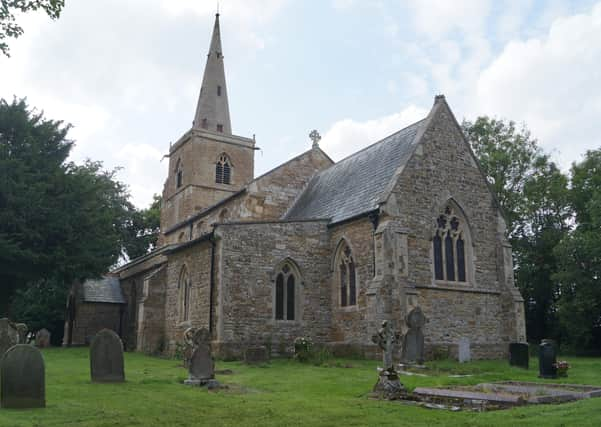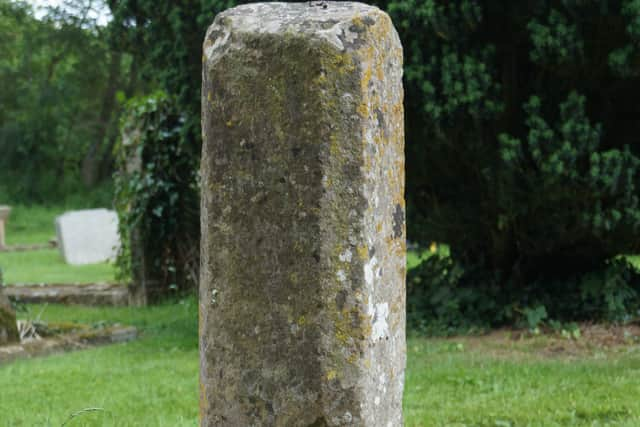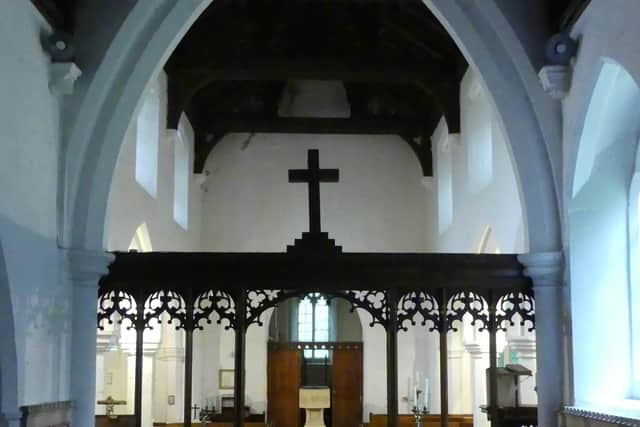Linwood church – is it the Market Rasen area’s best-kept secret?


This week Dave Carter shares his research on Linwood Church, just three miles from the centre of Market Rasen
When I started out on the journey as a volunteer for Linwood church, never did I think it would end up taking me half way round the world .
Advertisement
Hide AdAdvertisement
Hide AdMy original task was to raise funds for the church to cover necessary repairs and make the area more user-friendly by replacing the 100-year-old heating system and conserving the organ, stained glass windows and brasses.


However, I ended up researching the heritage of this small village church, heading back to the Battle of Hastings.
Along the way, I have been introduced to a whole raft of people through the ages associated with the church and the wider area.
Linwood St Cornelius church is based four miles south of Market Rasen and south of the hamlet of Linwood, at the end of church lane off the B1202.
Advertisement
Hide AdAdvertisement
Hide AdThere has been a church on this site since at least 1068, as it is mentioned in the Domesday Book, when it was owned by Alfred of Lincoln and Durand Malet.


The church was built from coarse and square ironstone rubble, a slate roof with stone coped gables.
The tower was built in the 14th century with a moulded parapet and complete with gargoyles.
The church has been improved and increased in size to now encompass a chancel as well as the tower, which originally held three bells dating back to the 1500s.
Advertisement
Hide AdAdvertisement
Hide AdUnfortunately, one bell had to be sold to pay for emergency restoration work to the church.


The main windows each have a label stop, which is a head of a prominent person.
So far, we have only been able to identify three of the eight, who we think are King Richard, William Shakespeare and Anne Hathaway. If anyone can confirm this or knows who the others are we would be only too pleased to know.
The original village was situated to the east of the church with the original spelling being Lynwode.
Advertisement
Hide AdAdvertisement
Hide AdThe village and church were originally surrounded by a moat, part of which can still be seen round the west side of the church.


With a population of 165 people at the time of the compilation of the Domesday Book, over time the village became a shrunken village – the term used to describe a village that has suffered the effects of the agrarian revolution, which saw the enclosure movement and mechanisation of the farming process.
This resulted in workers being forced to find work in the dark satanic mills driven by wool and cotton production.
These villages were further depleted by the plague, resulting in the abandonment of many villages, and the growth of the new hamlet of Linwood in its current position – and the change in spelling.
Advertisement
Hide AdAdvertisement
Hide AdIf you use Google maps and enter Linwood, Market Rasen in to the search bar, this will bring up a map of the whole Linwood area.
If you locate St Cornelius church and switch to ‘satellite view’, you will see a square and oblong marks on the field to the right of the church, with the outline of the moat showing running back toward the church. This is thought to be the remains of the village and manor house.
The church is the only one in England dedicated to St Cornelius, who was martyred in June 253 .
St Cornelius’s saint day is September 16.
He is the patron saint of domestic animals, cattle and ear ache.
Advertisement
Hide AdAdvertisement
Hide AdIt is hoped that sometime in the future it might be possible to hold a service celebrating our faithful friends and companions – watch this paper for details.
There are also 13thcentury stained-glass windows which are of national importance, as it is the last remaining window dedicated to the saint in the UK.
The church has English Heritage Grade One status and is currently listed on the heritage at risk register.
Situated in the south church yard is what remains of a medieval cross, which has Grade Two status.
Advertisement
Hide AdAdvertisement
Hide AdWith a quadrangular base and octagonal shaft, it is thought that this cross may have been used as a meeting point or even place for worship for the village or travellers to the area.
Like most buildings of age, the church needs remedial work carrying out on it and during the search for funding and research into the church, many facts and sources of information have come to light relating the church, members of the congregation and the surrounding area.
It prompts the question as to the significance of the village of Linwood.
Why did it have such a part in the history of Chancellor Law, that affects not only our own laws but those across the world?
What was the connection with King Henry VI?
Advertisement
Hide AdAdvertisement
Hide AdWhy should a warrant for a royal deer park be granted in the area?
Why did Queen Victoria have connections with Lynwood?
Why does a school in New Zealand, and in fact a whole district, have connections with this small hamlet situated in the Lincolnshire Wolds?
Some of these questions I will be able to answer in future articles, others are still in research and no doubt will reveal other items of interest about our villages.
If anyone is interested in helping, we are looking to form a Friends of Linwood Church to help develop the church and its history
Advertisement
Hide AdAdvertisement
Hide AdEmail the vicar, Claire Walker on claire.walker@ lincoln.anglican.org or me on [email protected] .
It has been a fascinating journey. I don’t possess any specific research qualifications or historic knowledge, I just have an enquiring mind and enjoy reading about our past, so there is no reason why you cant research the history of your house, your area or events in the past for your village too.
There are many resources on the web and we are fortunate to have a good archives service in Lincoln, where people will be only too pleased to help you.